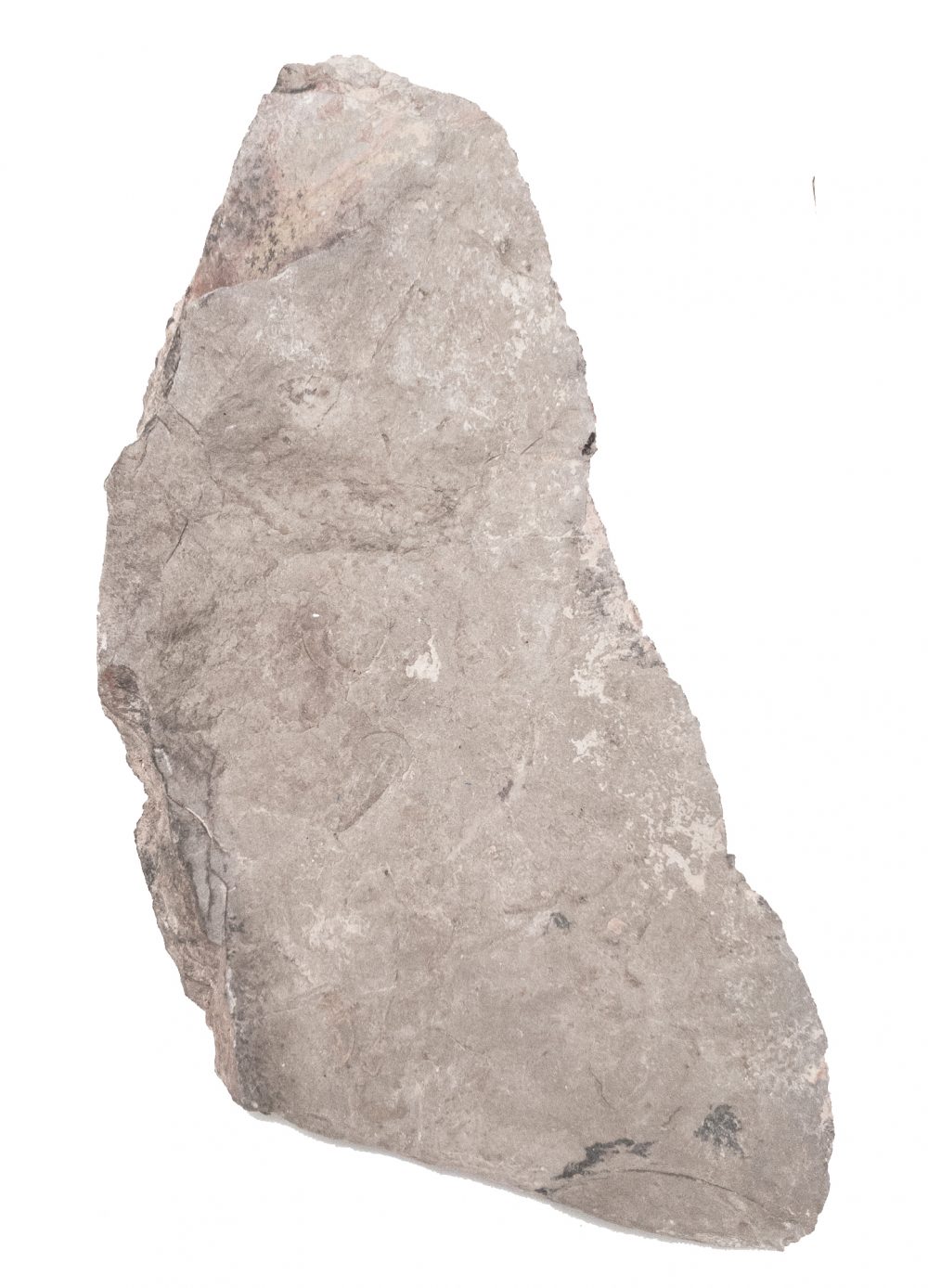I’ve started taking photographs of rocks and minerals I’ve sourced to illustrate my book. While my publisher has an account at Shutterstock.com, I need certain custom photos to accompany my text. My work this morning revealed insights into truthful rock and mineral photography.
My tools are a camera, a tripod, and a light table. The light table flickers so I leave it off, using its white surface as a background. Professionals say that dark material is usually photographed against a light background while lighter material shows best against dark. But my publisher prefers white for all shots.
I took this photo of phyllite and I thought it turned out well. I was using natural light through a south window. A flat specimen, it had no irregular surfaces to throw the camera out of focus.

A few hours later I happened to glance at the description given by Geological Specimen Supply, fine folks who answer their e-mails and sell good sized rock and mineral specimens. Their description reads in part, “Phyllite is one step beyond slate in metamorphism. The surface has a definite sheen from clay minerals that altered to mica, chlorite or graphite.” Hmm. Where was my sheen?
While I will have to take another photograph with my good camera, I snapped a pic with my iPhone camera and a table lamp to show the sheen. Here it is. Looks different, doesn’t it?

While I don’t have a piece of slate handy to show the difference between it and phyllite, I do have a photograph of shale, which is the first step in the metamorphic process. First shale, then slate, then phyllite. And then schist and then gneiss. This shale was photographed under the same side lighting as used in the shot above. No sheen at all, which is a definite property of phyllite. This shale, by the way, is what you would look into for trilobites.

As a side note, the phyllite shown was collected in Placer County in the American River Canyon. There are actually three canyons in that area as there are three forks of the American River, though they wander into El Dorado County as well. These canyons were my main prospecting area for over twenty years and I can’t tell you how many times I walked over slate, when in fact it was probably phyllite. The differences in the rock world can certainly be sublime. Until you throw some light on the subject!
